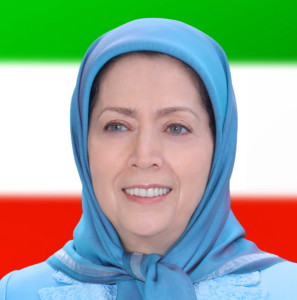Maryam Rajavi: Martyrs of Iran Uprising have exposed Khamenei as the most reviled dictator of our time
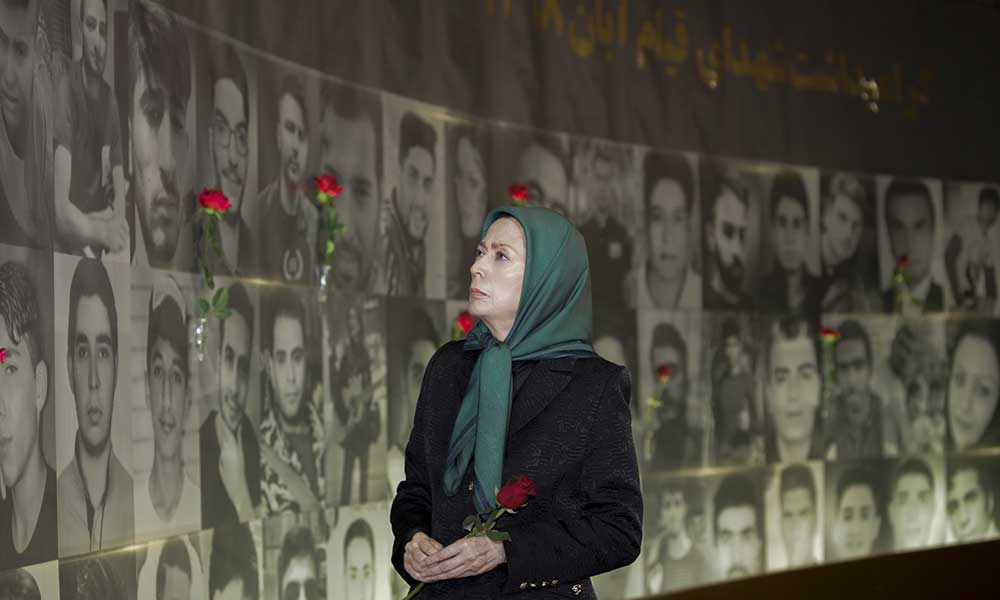
Commemorating the 40th day of the martyrdom of the victims of Iran Uprising at Ashraf-3
Protesters who have risen up for freedom,
Parents of the martyrs,
Courageous members of the resistance units,
Fellow compatriots,
I salute you all.
On the eve of the 40th-day commemoration of the martyrs of the Iran uprising, we have gathered with the People’s Mojahedin, the most valiant children of the people of Iran, at Ashraf-3.
Massoud Rajavi, the Leader of the Iranian Resistance, said, “The roaring river of the blood of martyrs guarantees our nation’s certain victory.”
With their sacrifice, these martyrs have inspired and reinvigorated the Iranian nation.
This ceremony is held on behalf of all the bereaved parents in Iran, on behalf of those who in the past 40 days shed tears for their fallen heroes and increased their rage and resolve to uproot the mullahs’ murderous dictatorship.
I send you my sincerest and heartfelt condolences on the loss of your loved ones. I commend you for your perseverance.
Flowers of a rebellious generation
I am speaking to the courageous people and youths of Iran, all the friends, comrades, and neighbors of the proud martyrs. And before anyone else, I am speaking to you, the bereaved families, especially the grieving mothers, on behalf of a Resistance movement which has fought and struggled against the atrocities and demagoguery committed by the ruling mullahs over the past 40 years.
This resistance began on June 20, 1981, when the Revolutionary Guards opened fire on half-a-million people in Tehran and murdered the young PMOI supporters in cold blood; it continued when the suppressive forces snatched the wounded and blood-drenched bodies of young protesters from hospital beds on September 27, 1981; when 30,000 political prisoners were massacred in 1988, and when the Iranian regime’s proxies attacked and fired missiles on camps Ashraf and Liberty.
Throughout this 40-year struggle, countless number of my PMOI sisters and brothers and my fellow combatants have been slaughtered, executed or massacred by the mullahs. So, please remember that the Mojahedin and members of this Resistance feel your pain and suffering with their hearts and souls.
But you must also know that these martyrs are still alive because they are eternal. They are the flowers of a rebellious generation. They burst into life out of the sacred will and determination of an arisen nation. They are the harbingers of freedom in Iran.
So, hold your head up high. Be proud. You are the mothers and fathers of heroes who shook the clerical regime to its foundations, so much so that the regime has no escape from it.
Crimes against humanity committed on the streets
According to reports obtained to date, the number of martyrs definitely exceeds 1,500. Of course, the actual number is much higher. This means that the regime has killed at least 60 times more than the number of people slain during the uprising of December 2017-January 2018. Many more were wounded using knives, axes and pellet guns, among other weapons.
Indeed, these were instances of crimes against humanity carried out on the streets, right in front of the eyes of defenseless people. The world has witnessed one of the most horrific crimes of the 21st century.
The world witnessed that the mullahs’ regime does not hesitate to kill even 13 or 14 year olds.
Amir Reza Abdullahi, 13, in Islamshahr; Nikta Esfandani, 14, on Sattar Khan Avenue in Tehran; Armin Qaderi, 15, in Dowlatabad district of Kermanshah; Khaled Ghazlavi, 16, in Khorramshahr; and Reza Neissi, 16, in Pastorizeh district of Ahvaz.
This is just a partial list of the teenagers killed during this uprising.
For what crime were Amir Reza, Nikta or Armin killed? Why was the blood of Khaled and Reza spilled? Their souls cry out: For what crime were we killed?
We also see the names of Iran’s courageous women among the proud martyrs of the uprising. Their valiance and audacity instilled fear in Khamenei’s Revolutionary Guards, so much so that they repeatedly acknowledged the significant role of women in the uprising.
Hail to these brave heroines.
The massacres signal the end of the mullahs’ inhuman regime
Let me emphasize that in the face of these arisen youth, the regime cannot forestall its overthrow.
Khamenei and his IRGC are dead wrong if they think that they can continue their rule by filling the marshlands of Mahshahr with the blood and corpses of our defenseless people.
These massacres signal the end of the mullahs’ inhuman regime.
Our heroes and proud martyrs have exposed the face of Khamenei as the most reviled and murderous dictator of our time for ordering this horrific massacre.
Despite all these crimes and bloodshed, the Iran uprising will continue. Despite their claims, the mullahs cannot extinguish this uprising. As Massoud Rajavi has said, “The uprising and the rebellion to overthrow the regime and to establish people’s sovereignty cannot be extinguished… It is time to proliferate, expand and spread the resistance units, and the rebellious neighborhoods and cities… The plan and the priority is to extinguish the religious dictatorship in its entirety.”
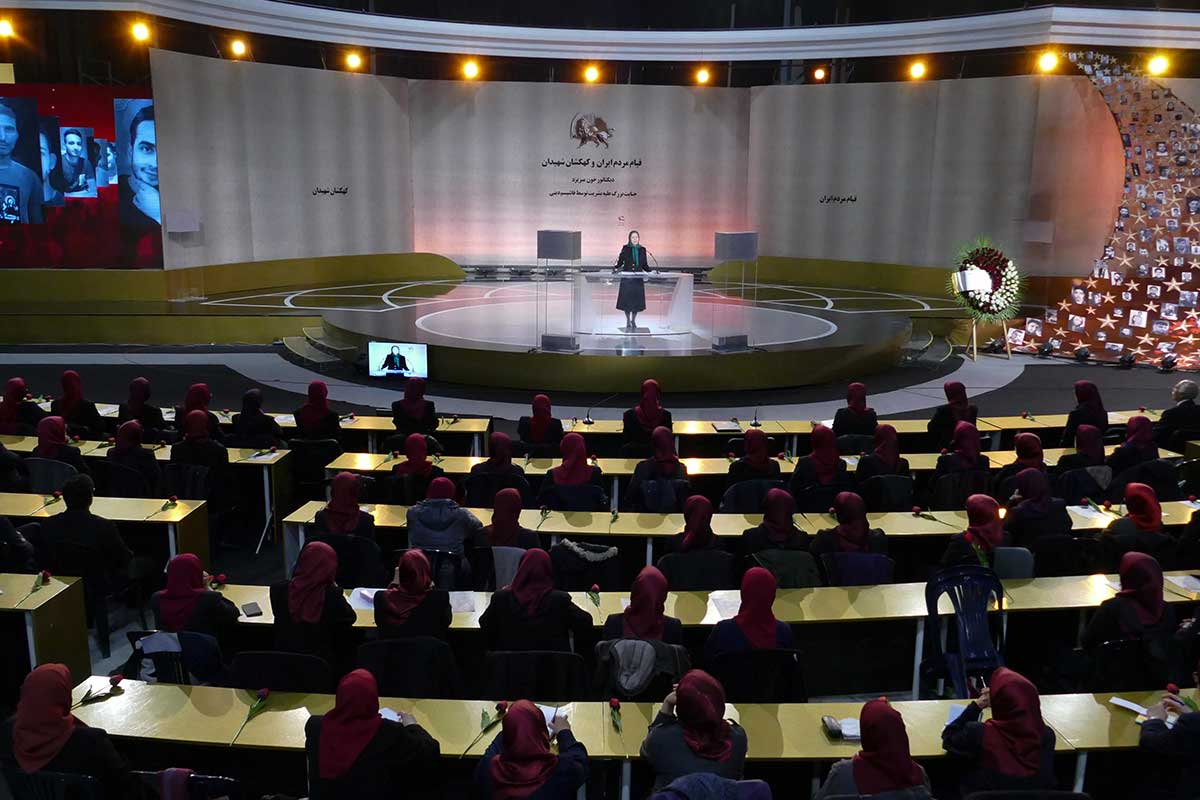
Essential conclusions
The nationwide uprising in November erupted in circumstances where unlike last year’s uprising, the regime was already prepared. They had put their security forces on full alert to rein in a social backlash, particularly regarding the fuel price hike. Since the uprising in December 2017, the regime made every effort, and used every repressive and deceptive measure, to eliminate the basis and opportunities for the outbreak of another uprising. But it failed completely.
I will try to summarize the key conclusions drawn from the recent uprising:
The November uprising dealt an irreparable blow to the regime in its entirety
1. In 48 hours, the November 2019 uprising dealt a major, devastating, and irreparable blow to the regime in its entirety. Angry protesters confronted the regime’s suppressive forces by destroying the mullahs’ centers of repression and plunder.
According to the regime’s leaders, 1,000 banks, 900 petrol stations, and many of the governor offices were set ablaze. More than 80 IRGC and Bassij bases and police stations, and a large number of seminaries were attacked and overtaken.
Protesters liberated vast parts of several cities. From Shiraz and Sadra, to Mahshahr, Shahriar, Islamshahr and Quds.
In some parts, including in Mahshahr devastated people rebelled and took up arms. The protests and uprisings turned into a full-fledged war against the criminal Revolutionary Guards. In this way, they showed the path to, and the prospects of, the victory of the uprisings and the liberation of Iran.
People’s confrontation against the entire regime
2. The November uprising was the scene of a showdown between protesters, young people and resistance units on the one hand, and on the other hand the regime in its entirety, including its suppressive forces and its political apparatus. At 2:00 p.m. on Saturday, November 16, the regime hastily declared a red alert. The Islamic Revolutionary Guard Corps (IRGC) took over control and command for suppressing protests. All suppressive forces acted under the direct command of the IRGC. Yet, they failed to bring the situation under their control. At 6:45 a.m. on Sunday, November 17, the mullahs’ supreme leader Ali Khamenei hurried to the scene to publicly declare his support for the fuel price hike and he personally issued the order for an all-out suppression of the uprising.
“The officials must seriously carry out their responsibilities,” he said. The regime deployed armored personnel carriers, tanks and helicopters in some cities, including Khorramshahr, Kermanshah, Shiraz, and Mahshahr.
An irreversible turning point
3. Hassan Rouhani’s Interior Minister said some 600,000 people took part in the uprising. He said around 130 to 200 thousand people were “going around all the time and instigating riots in various places. For example, in Tehran alone, 100 incidents and clashes erupted on Saturday.”
This is only a part of the reality that the regime’s officials are acknowledging. The whole truth would give a very different picture of what really happened.
Obviously, the regime understates the actual numbers and admits to just a small fraction of the reality. Nevertheless, in these limited accounts, they admit that an anti-regime fighting force in the scale of several hundred thousand rose up to fight and overthrow the religious dictatorship.
This fighting force forms the backbone of the war of liberation to overthrow the regime. It came to the scene during the November uprising.
The IRGC’s hollow invincibility was shattered. People realized their own power and strength, terrifying the other side.
Now, it is the regime which is permanently overwhelmed by fear. And this is the significant political and strategic conclusion drawn from the November uprising. The Iranian people and Resistance paid a heavy and bloody price to achieve this enormous and irreversible leap forward. Both the regime and its suppressive forces and also the people, protesters, youth and resistance units passed a watershed moment. Now, a return to the conditions prevailing prior to the November 2019 is impossible.
An explosive and volatile society
4. The objective basis and root of this uprising is an explosive society seething with discontent. The protests flared up in cities to which deprived people from villages and small towns had migrated. From Islamshahr, Ghal’eh Hassan Khan, Shahriar, Robat Karim and Marlik, in south and west of Tehran, to Fardis and Golshahr in Karaj, to Jafarabad, Elahieh and Dowlatabad in Kermanshah, to Zourabad and Sharifabad in Sanandaj, to the Joujesazi in Marivan, to Ma’aliabad and Kouzegari in Shiraz, and Zeinabieh in Isfahan.
Yes, the residents of these cities are suffering from unemployment and poverty. They are deprived of many urban services and have, in many respects, been removed from the country’s population. These cities and towns have not emerged overnight; they are the product of the regime’s plunder and pillage particularly since the 1990s. The regime does not have any solutions because it is itself the one that has created so much misery, destitution and social calamities.
Consequently, the mullahs are at impasse in confronting these hotbeds of rebellion and revolt. They will have to deal with them again in the near future.
Resistance units spark the uprisings
5. The regime has admitted that resistance units have been working ceaselessly for the past two years, and have influenced the direction of the uprising. Indeed, the activities of the resistance units since January 2018 were accompanied by many arrests and exacted great sacrifices to keep the flames of the uprising alight.
As Massoud Rajavi said in November 2018, “The resistance units act as the spark that ignites the uprisings. They are the tip of the spear for the uprisings and act as catalysts. They are the source of continuity and guarantee their advancement. Once they solidify their position and multiply, they will coalesce into a Liberation Army in rebellious cities.”
The November 2019 uprising proved the correctness and validity of the strategy based on resistance units and rebellious cities. The Iranian Resistance’s leader formulated and announced this strategy in 2013, after the massacre of PMOI members in Ashraf.
Indeed, the idea of “resistance units” is a trailblazer and a guiding light for the rebellious young generation in Iran.
Massacre of a valiant generation in the streets
6. Faced with the Iranian people’s uprising for freedom, the religious dictatorship committed a crime against humanity. In 1988, Khomeini carried out a massacre in secret and inside prison walls. Now, Khamenei has resorted to committing a massacre in the streets, shooting young people in the head and chest at close range, killing protesters and throwing their bodies in dams and water channels, and striking wounded protesters with axes in the streets.
Khamenei and his criminal Revolutionary Guards are digging their own graves by shedding so much blood. As a result of this bloodshed, the Iranian people have become a hundred times more enraged than in the past. This is the dynamics of future uprisings and it strengthens the resolve of the people of Iran in their fight for freedom.
A fearless, daring and enlightened generation has come to the battlefield with an extraordinarily high morale to overthrow the regime. The rebellious generation of the November uprising is a significant force in the forthcoming showdown between the Iranian people’s great Liberty Army and the mullahs’ regime.
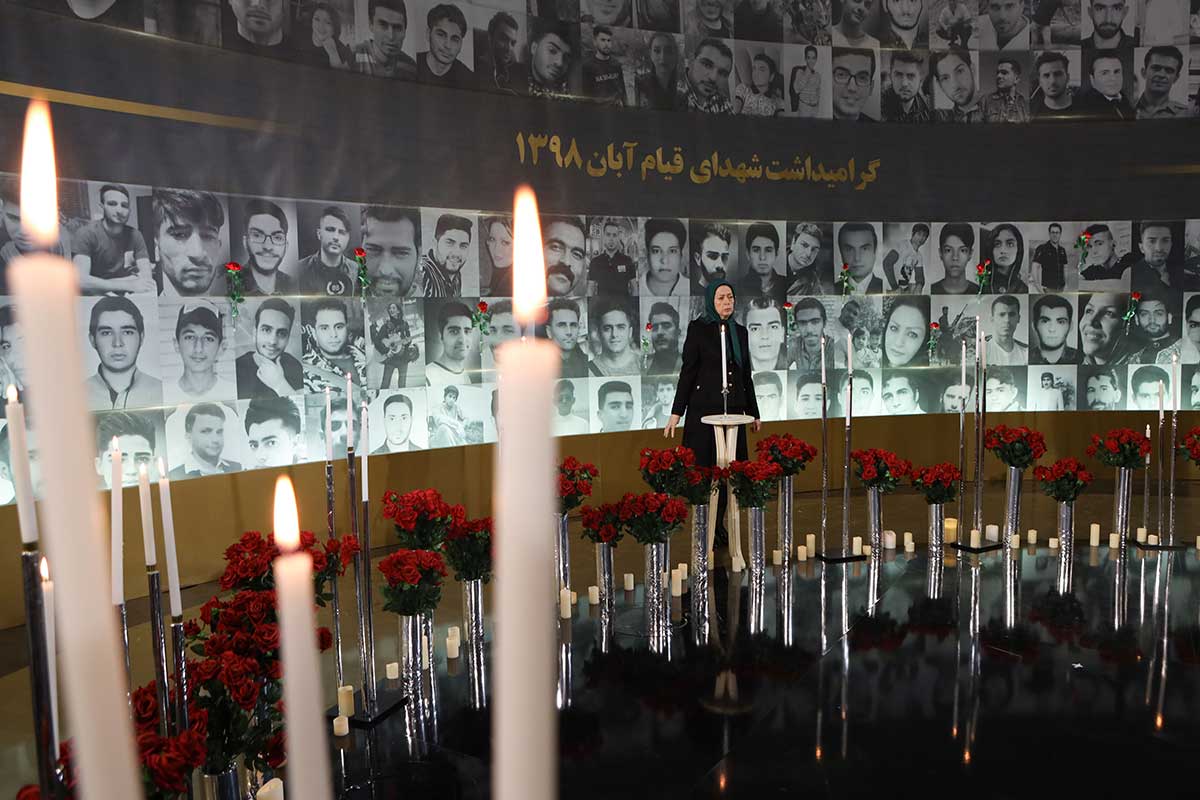
Debunking the myth of velvet revolutions in Iran
7. The bloody November uprising also dashed certain myths and illusions about the regime. This regime is neither stable nor has any future. This uprising proved that the idea of velvet revolutions in Iran is nothing but an illusion. No one in Iran has pinned any hope on change from within the regime. The only solution is the overthrow of the regime in its entirety, and this will definitely happen.
International community must end its silence and inaction
8. The international community must end its silence and inaction. Governments and international bodies must call for an immediate end to the killings and arrests. Khamenei, who openly ordered the crackdown, Hassan Rouhani, who repeatedly declared support for the suppressive operations, Ali Shamkhani, secretary for the Supreme Security Council, and Hossein Salami, the IRGC’s commander, have committed crimes against humanity. The UN Security Council must declare them perpetrators of crimes against humanity and they must face justice.
The United Nations must immediately dispatch fact-finding missions to Iran to investigate the situation of those killed, wounded and imprisoned.
The world must support the legitimacy of the resistance waged by Iran’s rebellious youths against the ruthless Revolutionary Guards. It must recognize the struggle of the people of Iran to overthrow this regime. This is the same right stipulated in the Universal Declaration of Human Rights, in the French Revolution, and in America’s Declaration of Independence. The people of Iran, as stated in the Universal Declaration of Human Rights, have risen up and taken recourse “as a last resort, to rebellion against tyranny and oppression.” This right must be recognized.
November uprising, a learning experience for millions of rebellious youths in Iran
The November uprising marked a watershed moment in the history of our country, offering many enduring and brilliant lessons.
It represented a learning experience for millions of our nation’s rebellious youths:
To learn about the strategy and tactics of uprising and overthrowing the regime;
To gain a deeper understanding of the readiness of society to bring about sweeping and fundamental change;
To achieve a clearer understanding of the decadence of a regime with no way out of its crises;
To learn about the futility of investing in the regime’s moderation and of searching for a solution without paying any price;
To witness the termination of hollow and fake strategies presented on the margins of the regime;
To see the hollow nature of the regime’s rhetoric and its de facto allies’ critique against the PMOI’s strategy since June 20, 1981;
To draw attention to the anti-regime fighting force and the backbone of the struggle to overthrow the regime;
To see the veracity of Massoud Rajavi’s observation that the only answer is decisiveness and the destruction of the IRGC. Any attempt to recruit it or parts of it amounts to becoming an accomplice to it.
Indeed, the disgraceful industry of fabricating puppet or dependent alternatives, aided by the regime’s direct or indirect involvement and at the urging of this or that power or foreign service, has been fully discredited and marginalized.
These developments lent credibility to the Iranian Resistance and elevated the standing of the National Liberation Army flanked by armies of rebellious youths, the hungry, the unemployed and the oppressed.
At its core, the issue is simply this:
Which force, strategy and course of action can topple the regime?
Would it be spontaneous or organized? Does it look to the past or to the future?
Does it advance with empty talking points and at no cost, or does it advance with blood?
Is it a spontaneous concoction in some foreign country, or is it borne out of six decades of tortuous, blood-drenched struggle against the two dictatorships of the Shah and the mullahs?
Yes, we welcome anyone who wants and is able to practically bring down this regime, provided that they focus on Iran and the ruling religious fascism, provided that they focus on the active overthrow of the people’s enemy and avoid general, hollow talks and harmless slogans which won’t hurt the regime.
Yes, today, everyone knows that the most forbidden name and the first red line for the regime is the name of the Mojahedin (PMOI/MEK) as it has been throughout the past 40 years. The regime’s intelligence agents clearly admit that their red line is not even talking unfavorably against Khamenei, but rather favorably regarding “the People’s Mojahedin Organization of Iran.”
Solidarity is essential to sustaining the uprisings
Solidarity and cooperation are the essential elements for sustaining the uprising.
It is a patriotic duty to support the families of martyrs, attend to the wounded, and assist the resistance units in any form and to any extent possible.
By commemorating the selfless children of the people of Iran, and honoring their sacrifices, continue to boost the morale and determination of the people of Iran wherever you are.
Your support for the resistance units is essential and tantamount to participating in determining the brilliant future of tomorrow’s Iran.
Hail to the martyrs,
Hail to protesters,
Hail to freedom and the Liberation Army.
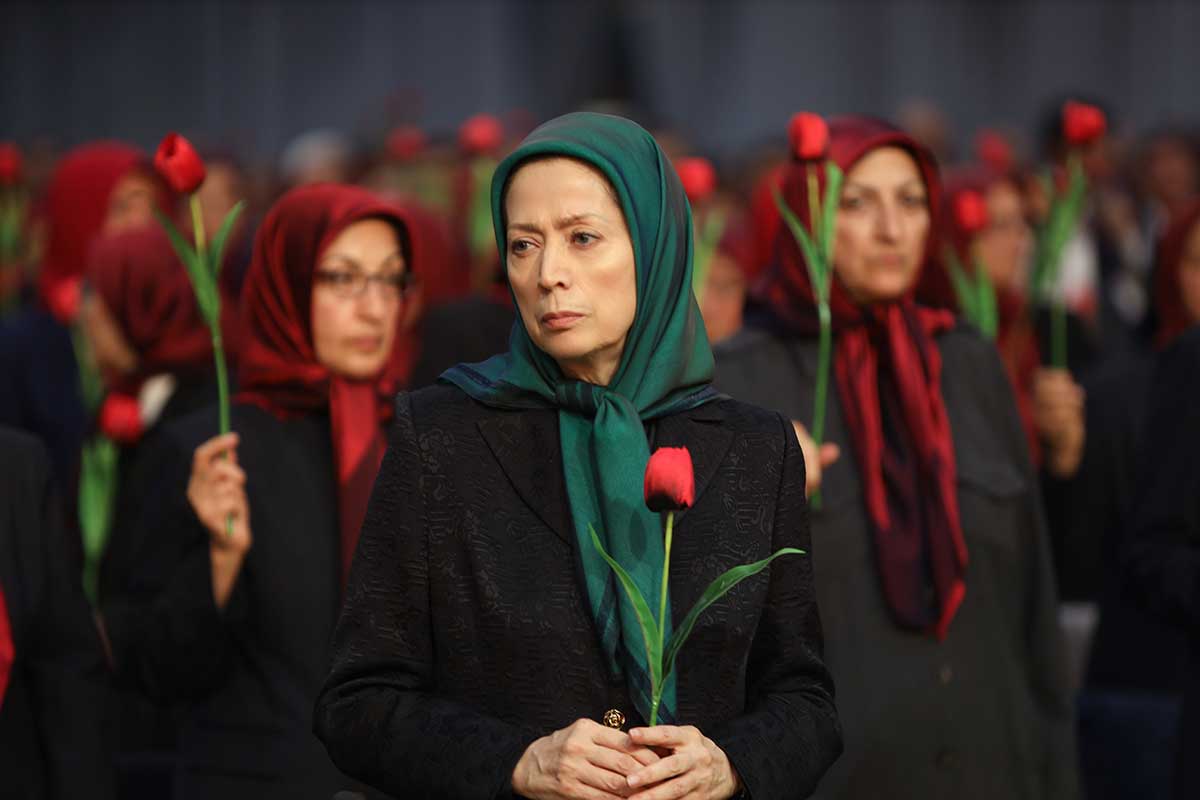
- Tags: Iran, Iran protests, mullahs' regime, Uprising

